Treatment of children
Dentysta stomatolog Warszawa Ursynów ADENTIS / Services / Treatment of children
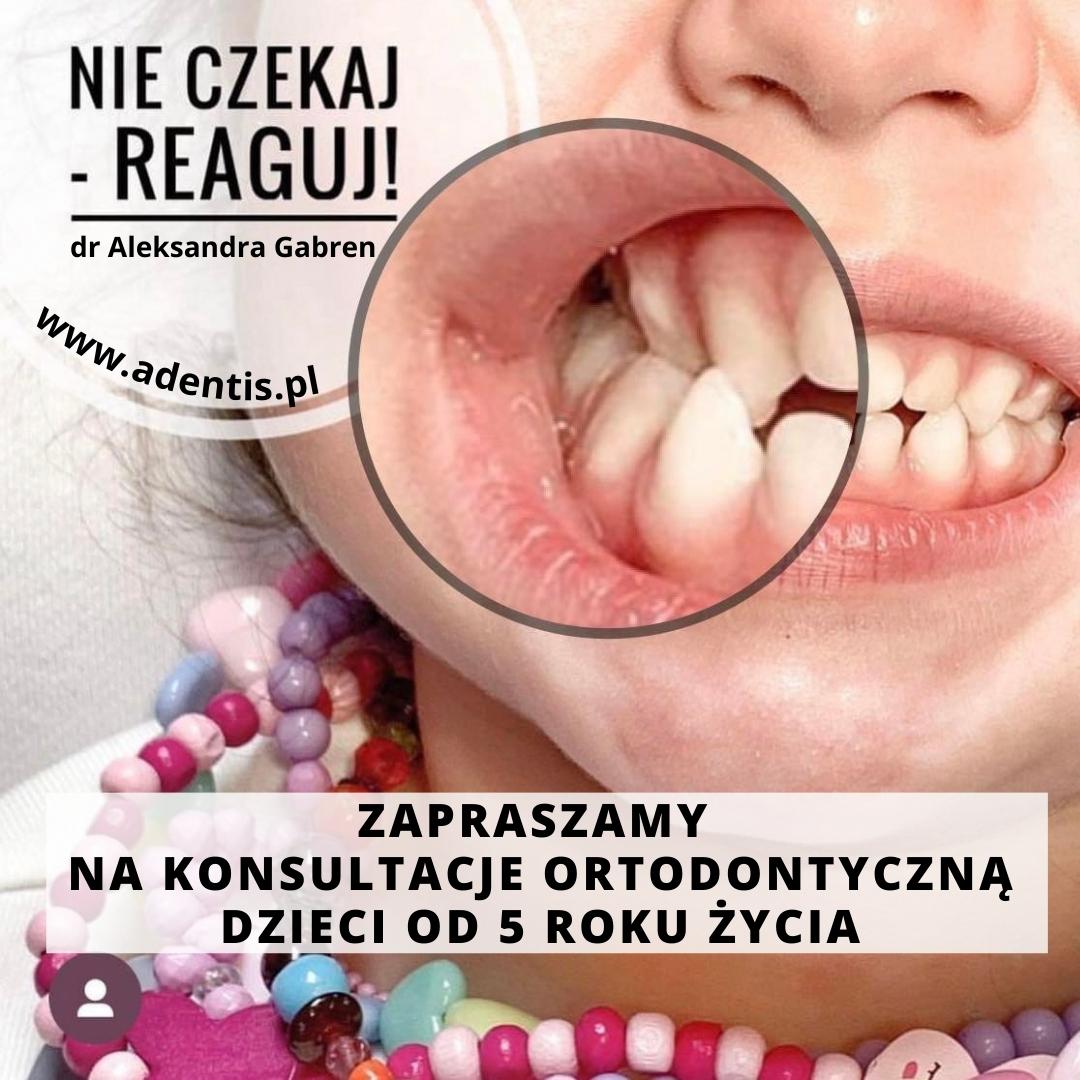
- Can slouching and bad posture cause malocclusion?
- Is your child grinding their teeth?
- Does your child have crooked teeth?
- Can a malocclusion cause a bad posture?
- Our observations show that YES.


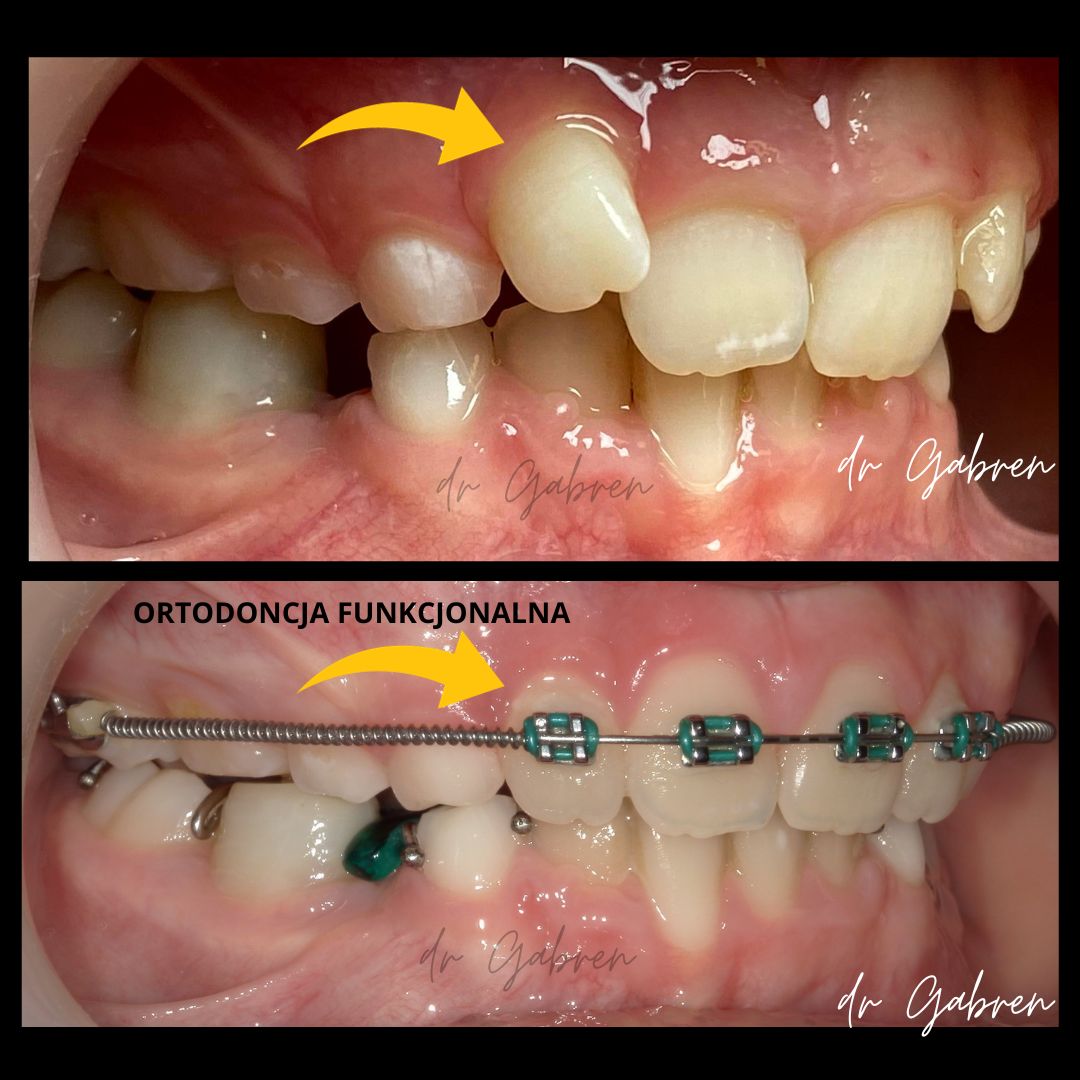
Check if your child is healthy
Abnormalities you can check for yourself:
- Are the lower teeth visible or invisible when the teeth are together?
- If the upper sixes are already visible, the lower sixes should also be visible – maybe there is no room for them and they cannot emerge ?
- Is the smile symmetrical?
- Is the occlusal plane on both sides at the same height?
- Is the frenulum of the tongue normal or hypertrophied?
- Does your child clench or grind their teeth at night?
- Is the jaw movement in a straight line in two planes? (in the video the lower jaw falls backward excessively)
- If your child has such abnormalities, it would be advisable to visit a specialist.
- I suggest consulting all these symptoms with an orthodontist, speech therapist and physiotherapist.



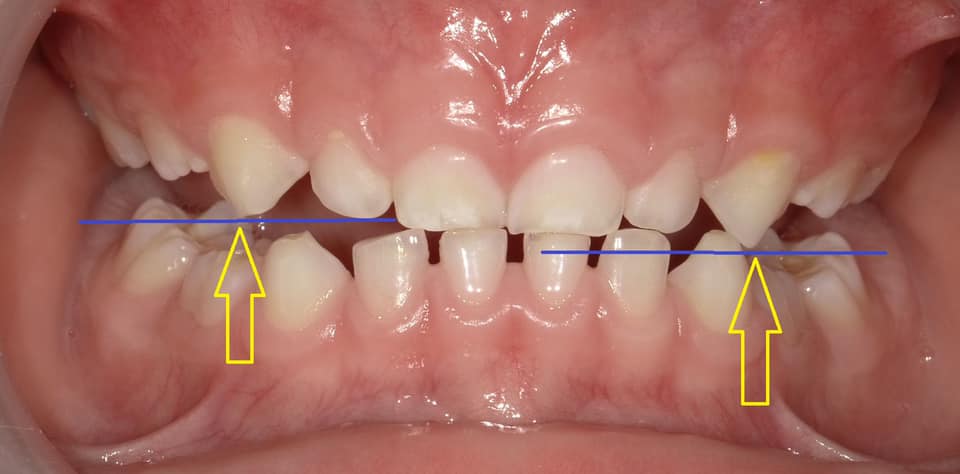
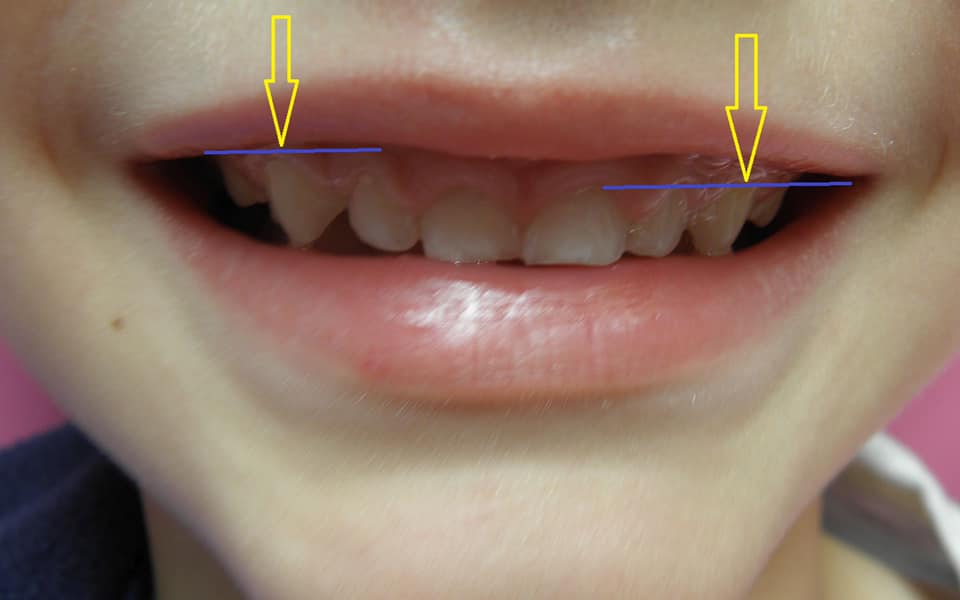
If the child’s temporomandibular joint is dysfunctional
the following symptoms may occur simultaneously:
- generalized joint hypermobility (towards laxity, hyperextension),
- abnormal body posture with deepened lumbar lordosis knee valgus,
- feet in a flat valgus position,
- headaches with “tics” of the jaw and head, which the child uses to change position and reduce the increased tension of the muscles that clench the jaw and head extensor muscles.

A child’s head is relatively heavy in relation to its small torso, so moving it forward will cause the back extensor muscles to react to balance the overloaded position. The next stage may be to increase the stabilization of the lower limbs by deforming the knees and making the feet flat-valgus. These elements shift the center of gravity and contribute to the development of posture defects.
What conditions must be met to move the head back and equalize the center of gravity?
- opening the jaw with setting the resting position in the temporomandibular joint (temporomandibular joint),
- supporting the teeth in optimal occlusion centering the head of the mandible in the socket,
- positioning the tongue on the palate and learning the correct breathing pattern,
- use of inserts for flat valgus feet,
- pelvis alignment and stabilization,
- re-education of correct posture.
The above actions are effective therapy for scoliosis and effective anti-scoliotic prevention.
Collaboration between specialists
orthodontist – physiotherapist – speech therapist – parents
is an important element when planning holistic treatment.
Is your child grinding their teeth?Teeth grinding most often occurs when the jaw is retracted and the temporomandibular joints are compressed. The dorsal position of the head of the lower jaw is the result of an underbite, i.e. the lack of proper support for the teeth. The adductor, masseter and temporal muscles, protecting the incorrectly functioning joint, show increased tension and additionally press the head of the mandible upwards and backwards, thereby compressing the articular disc. The purpose of such activity may be the “need” to protect the joint in order to avoid degenerative changes. What does the patient do? The patient reflexively moves the jaw forward, additionally performing micro lateral movements (multi-plane), thus relieving the joint and temporarily relaxing the muscles, while grinding the teeth. Another important issue is the position of the tongue. When the jaw is retracted and clenched, the tongue simply has no room and tries to get out by pushing the teeth forward. Such activity causes the muscles to react to block the jaw being pushed and increase their tension, which leads to a reflex attempt to relax the muscles through micro movements. The mechanism of “global”, uncoordinated tightening of the jaw muscles leads to further jaw clenching and tooth grinding. According to our Adentis team (orthodontist and physiotherapist), this is what the teeth grinding process is all about. After appropriate diagnosis and treatment, our patients stop grinding if the problem was on the part of the SSJ. |
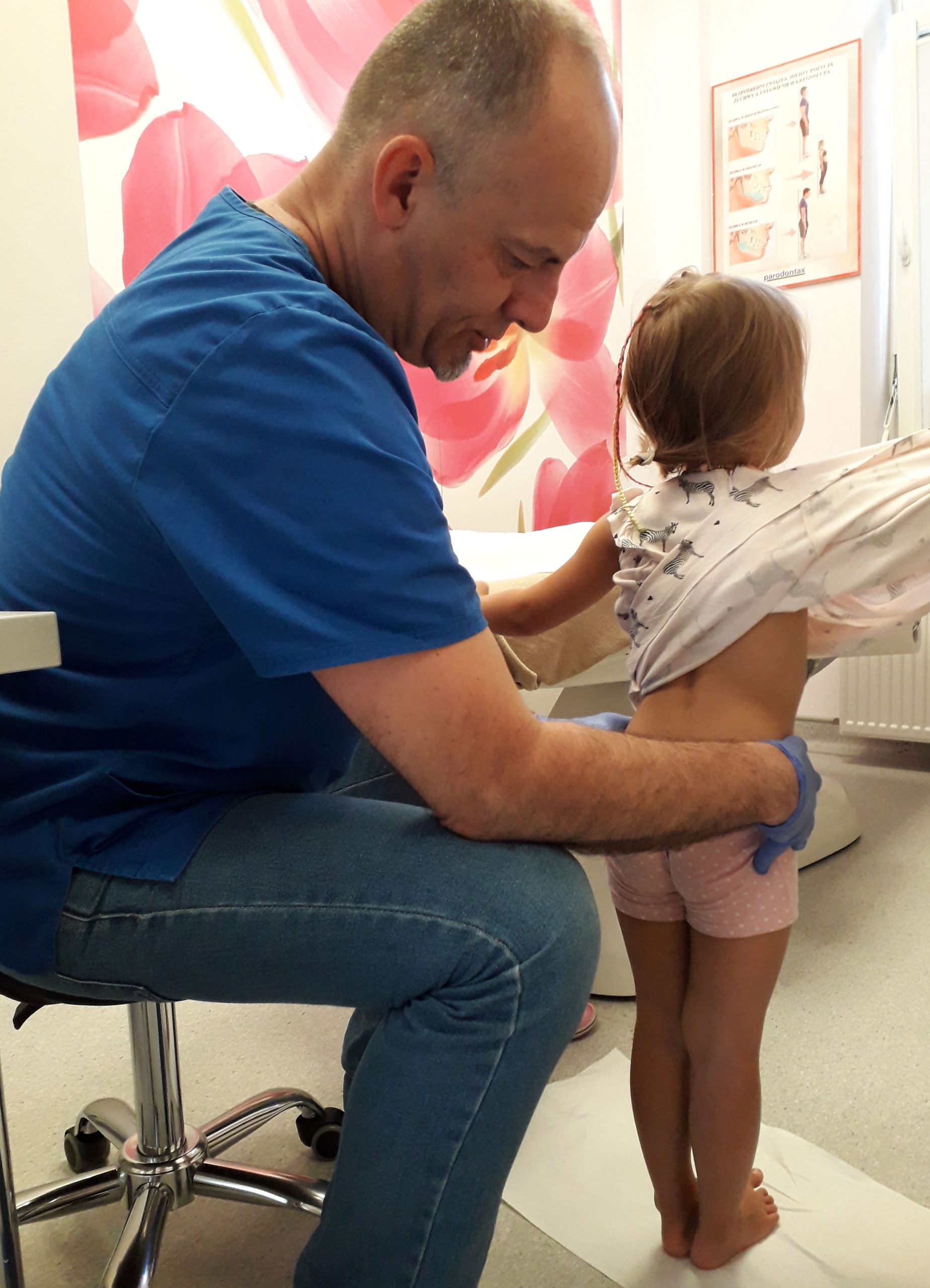
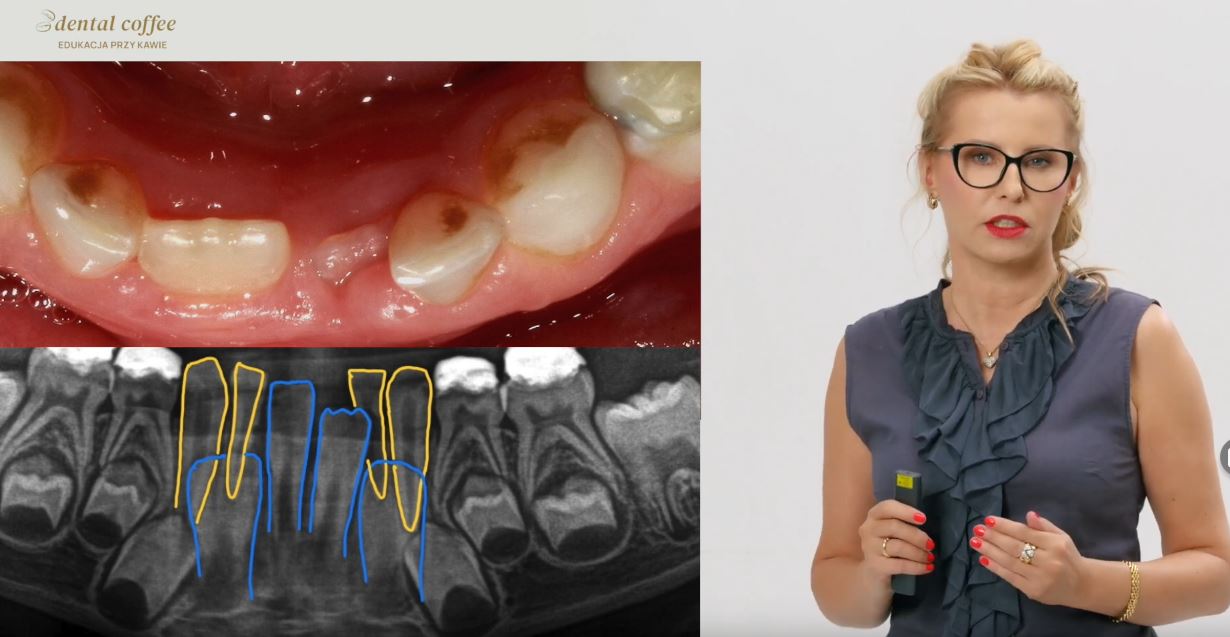
Replacing primary teeth is a topic that each of us knows very well.
The replacement of primary teeth with permanent ones begins around the age of 6. The whole process ends at about age 12.
The Tooth Fairy takes care of falling teeth, but when she has too much work on her mind, situations like this happen – one tooth grows in when the previous one hasn’t fallen out yet. And in such moments we come to help.


Does your child suck his thumb?
Thumb sucking leads to an open bite, which can lead to many complicated and serious consequences, e.g. increased malocclusion, impaired facial growth, and problems with biting food. Another thing is speech defects, problems with swallowing, eating and swallowing saliva. Your child may have such problems.
We are fighting for a new generation.
Use simple activities to build and maintain proper muscle function. Orthodontic treatment will be able to proceed more efficiently. And your little one has support and a chance for the proper development of the whole person!
RESPECT to all PARENTS for their support! Start with small things and your child will change. I also encourage parents to support their children.

Dr. Gabren

